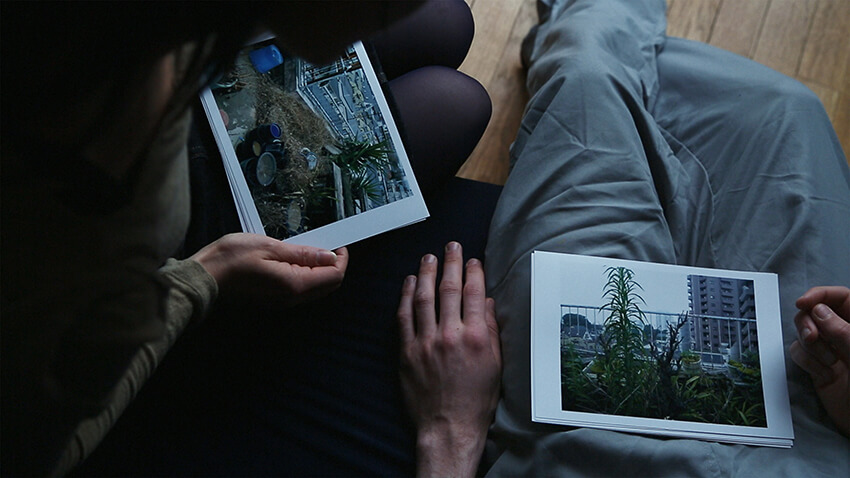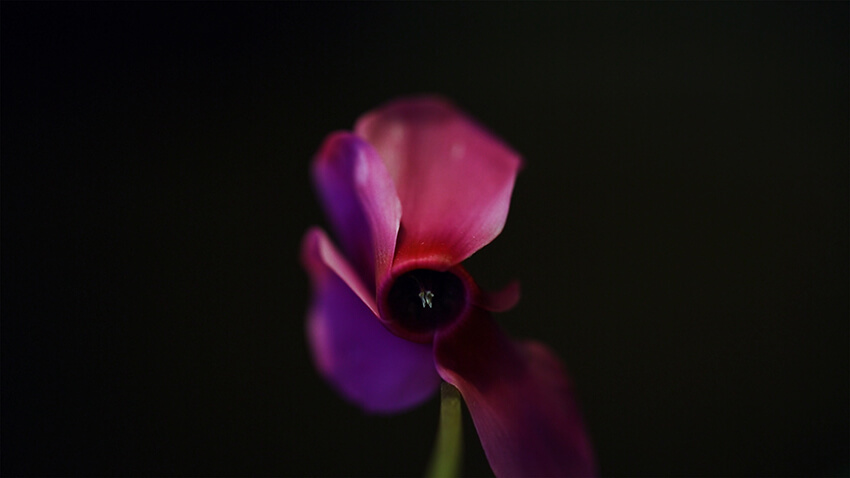Text by Anastasia Niedinger

PAN’s new offshoot and soundtrack series, Entopia, brings the platform’s fascination with audio-visual synthesis into heightened focus. Its inaugural release, Kuro, a film OST by left-field pop musician Tujiko Noriko, and visual artist Joji Koyama, blurs the boundary between screenwriting and composition.
Entopia is the latest offshoot series from PAN seeking to amplify and redefine our ideas of what a soundtrack can be. The series will survey critical works across the spectrum from musical composers on PAN and beyond, commissioned for the worlds of film, art, performance, installation works, theatre, dance and fashion.
An artwork of mute footage, disembodied aural narration and atmospheric scoring, Kuro engages a triptych of narrative forces, shepherded by its hypnotic OST. As both composer and featuring actress, Tujiko Noriko plays Romi, a woman living with her paraplegic lover Milou. The silent footage of their tender reality is recontextualised by Romi’s voiceover, recounting the tale of a mysterious Mr Ono for whom she also cared in a past life. Metamorphosing between past and present, myth and actuality, their existence becomes increasingly indistinguishable from a dark fiction, its edges haunted by Ono’s faceless role.
This use of divorced narration channels the tradition of Japanese benshi, the practice of live, interpretive voiceover during the era of silent cinema. Benshi’s improvisational license can be found in Kuro’s own OST, which does as much to deepen its pictures as it does to disassociate viewers, should one allow.
We wanted to make a film that plays with, and at moments unhinges the mechanisms of storytelling, in order to produce a cinematic experience that allows for space and ambiguity for the audience to explore.” –Joji Koyama and Tujiko Noriko share. Tujiko’s eclectic background as a singer and collaborator with names such as Lawrence English serves her transience between protagonist and composer and abstracted approach to its OST, which aims to score the space in-between narratives seen and told. As filmmaker and animator to Four Tet and Mogwai, Koyama’s own disciplinary breadth combines with Tujikos, who claim their roles became indistinguishable in its audio and screenwriting.
Kuro’s score takes a stoic, ethereal shape, its movements driven by contemporary ambient sensibilities, gentle melodic riffs and disjointed vocal lullabies — each liberally spacious and deeply melancholy. Bill Kouligas’ release of Kuro as an independent album gives credit to its beauty both within, and without Kuro’s artful footage, marking an exploration of OST consumption liberated from their visual counterpart, to seed new fictions inside of their listeners.
Entopia acknowledges a unique occupational and collaborative arrangement which often goes unexamined. For some, scoring renders opportunity for wholly intuited, compositional freedom, for others, it invokes degrees of classical methodology. In effect, the process generates a peculiar zone, one which places musical theory in creative competition with impressionistic, improvisational and non-linear techniques. In its efforts to redefine the ‘soundtrack’ Entopia’s release of Kuro not only champions the latter but disturbs restrained frameworks of storytelling into something far more fluid.


Entopia aims to amplify and redefine our ideas of what a soundtrack can be. Which notions of film scoring did you set out to challenge? Are there any other traditions or tropes you wish more musicians were subverting? Why?
I’m not sure if I was particularly conscious about approaching things in a challenging way, but I was glad that the Entopia series is sympathetic to how we worked on this film and the OST. I feel that for any musician or artist, whether things turn out well or badly, it is always a worthwhile pursuit to challenge how things are, and it is a lot more fun.
You refer to the music acting as glue to bind the layers of the film together. What about when these are isolated? Can an OST be consumed without its visual or narrative counterpart?
The OST is different in that it, of course, does not have the visual narrative of the film, and we also mixed it differently to how it is in the film, partly as we wanted to have it exist as another way to listen to the music of the film.
Having played Romi yourself, you have an intimate relationship with the film’s central protagonist and storyteller. As the film’s scoring musician as well, how did you separate yourself from Romi? Or is the music partly informed by her imagination?
I never really divided up the different aspects of making this film–in my mind, it was all mixed up together, and I tried to work in a way where I didn’t become overly conscious of the roles I was playing. Having said that, these roles were all supported by my perspective of directing the film.
For many listeners, it is difficult to articulate positive and negative connotations in sound — nevertheless, the effect is often felt. Often you’ve described Kuro’s music as haunting. Was this intentional? And did you approach the sound design from a more technical or intuitive approach?
My approach was initially intuitive, followed perhaps by a more technical one… For the bar scenes, the flood scene or the roof scenes, for example, I tried to think of the music as coming from within the sound world of the film and not simply pasting music onto scenes. I guess this resulted in a feeling of, at times, being trapped inside of Romi’s head–in a sort of heightened, claustrophobic atmosphere.
As directors, you and Koyama talk about splitting the film into visual and narrated stories which wrestle with one another, creating an in-between space and even new scenes generated by the viewer. What are the benefits of dissonant story architecture, as opposed to the consonant or “coherent” narratives in a traditional Western film?
Benefit… I wonder what this is? I think making so-called conventional, linear narratives has its merits and I don’t doubt that there is a great skill in constructing them, but I equally feel very frustrated by the laziness and also the arrogance of imposing ‘correct’ ways to tell a story. So for me, it’s not just about breaking tradition (a western narrative tradition) but more that I feel compelled to shake things. Having said that, when I’m doing the work, it’s not like I am always thinking about how I can go against something.
How did you and Entopia come together for the release of this project? What does being affiliated with Bill Kouligas’ new PAN offshoot mean to you?
When we first contacted PAN, we weren’t aware of any plans for Entopia–it was only after Bill Kouligas had heard the OST that he talked to us about his ideas, which we felt were very sympathetic to how we made Kuro. Bill felt that it was important to retain the context of the film and for us, the fluid way in which we made the film and OST makes it fitting that it will be the first release of the Entopia series.






